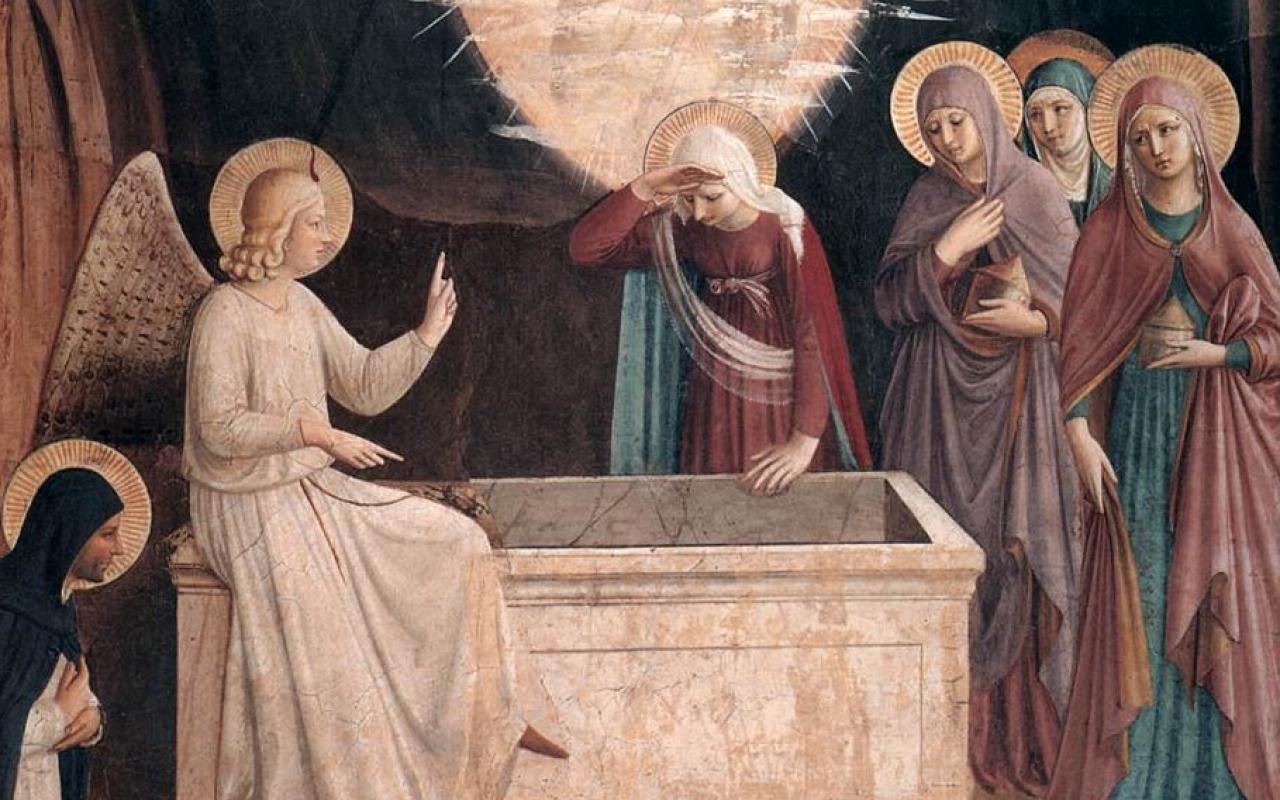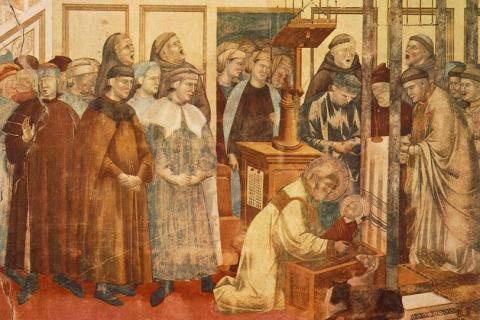
Before the fullness of time when Jesus will establish his Kingdom in the sight of all, he has established a time of mercy, working through his Church to proclaim the Gospel to all nations.
“The Church exists in order to evangelize, that is to say, in order to preach and teach, to be the channel of the gift of grace, to reconcile sinners with God, and to perpetuate Christ's sacrifice in the Mass, which is the memorial of His death and glorious resurrection.” – Pope St. Paul VI, Evangelii nuntiandi
It is easy, when looking at the millennia-long history of the Church, to think of its existence as a given, and to view Jesus’ founding of the Church as the obvious next step after his resurrection. But this is a perspective gained by looking back. At the time of its first founding, the disciples of Christ expected something different. They knew from the ancient prophecies that when the Messiah came he would establish a Kingdom. They understood that he was to be ruler not only of the Jews but of all the nations. They had come to believe that Jesus was the promised Messiah, and his rising from the dead made that belief a certainty. When he appeared to them and spoke with them after his rising, they asked him an obvious question: “Lord, will you at this time restore the kingdom to Israel?” (Acts 1:6). They had watched Jesus as he had preached about the coming of his Kingdom, gathered disciples, and made his march on Jerusalem. They had seen him enter the city by storm, take control of the Temple, and defy the religious authorities who resisted his rule. Those authorities had apparently managed to defeat and destroy him. Yet here he was, alive and more than alive, beyond the reach of death. Was this not the obvious time to launch the Kingdom? Just think how all the peoples of the world would flock to their banner, led by this magnificent King who had died and was now risen! And what a sweet vengeance it would be to witness Jesus confronting the people who had put him to death, and to see their confusion and terror!
But Jesus had other plans. He was indeed planning to establish a kingdom on earth, but it would be unlike any kingdom that had ever existed. It would not be founded with human means, by the power of armies or the strength of coercion. The day would come when the fullness of his rule would be made evident and he would take his rightful place as king of the human race in the sight of all. But that day would also be a day of final judgment when justice would be established and all evil destroyed. Before that fateful day, Jesus intended to inaugurate a time of mercy, such that all who were willing could renounce their allegiance to the dark spirit who had usurped the rule of the world and return to their true king. How was he to accomplish this purpose? How was he to seek out the willing and offer pardon for their offenses, while at the same time honoring the freedom of will and the testing of heart that was essential to his plan for those he had created in his image? How was he to make his presence known such that those who were seeking him could find him, and yet not make himself so evident that even those who wanted nothing to do with him would be compelled against their will to acknowledge his rule?
Jesus’ solution was to found the Church. He set up a divine society in the midst of the fallen world, a kind of resistance movement behind the lines of his enemy to battle the devil’s reign. He established a colony of heaven on earth that would be “in the world but not of the world” (John 17:15-16). Those who became his disciples would be given internal freedom from the devil’s rule even while they lived under his external power. Christ would inhabit his resistance colony through the Holy Spirit and would protect it from ultimate destruction. It would be his launching ground for his continued attack on the powers of darkness through time and across space. As generation after generation of humans were born, this unique society, pulsating with a divine life that was both potent and hidden, would bear the message of reconciliation and new life until the time had come when the age of mercy would end and the Kingdom would be inaugurated in its fullness.
Go therefore and make disciples of all nations, baptizing them in the name of the Father and of the Son and of the Holy Spirit, teaching them to observe all that I have commanded you; and lo, I am with you always, to the close of the age.
The path of this unique society as it has carried and proclaimed the message of the Gospel through the last two thousand years has been both remarkable and puzzling. The Church is remarkable in that it was set on foot by a band of working-class people with little power, learning, or social prestige, and has gone on to gather whole civilizations under its influence. At the present day, some two thousand years after its founding, it is still ruled by the successors of Peter and the Apostles, still professes the same beliefs they held, and has grown to be the largest and culturally most diverse institution in the history of the world. Many of humanity’s finest human minds, many of its greatest artists, many of its most talented and powerful politicians and rulers have encountered the divine presence of Christ in his body the Church and have been joined to its company. From a merely historical point of view, a reasonable assessment would set the Church high among the most impressive monuments of human history.
But there is a puzzling aspect to this history. Touch the Church at any point along the way, look deeply into its fortunes and its health from one period to another, and an odd conclusion emerges. One finds that there has never been a time in its two thousand year history when the Church has not been beset by evils, both external and internal, evils that have brought it into grave crisis and sometimes even to the verge of seeming extinction. When seen from a distance and provided with an aerial view, the Church’s accomplishments and influence look impressive and imposing. But get down into the trenches and become familiar with its day-to-day life, with hostile enemies attacking from without and corruption and incompetence plaguing from within, and one wonders how the thing has managed to stay afloat at all. It was true in its beginnings, as can be seen from the battles and troubles of the early Christian communities that dominate many of the New Testament writings. It is still true today. And it will be found to be true at every stage along the way. The Church is always dying, and is strangely always rising again. It seems to be constantly being deflected and defeated and yet somehow it accomplishes victory after victory. Just when its enemies have determined that it is old, decrepit, and finished as a living force, it pops up again as something fresh and new. Just when many of its own members are bemoaning its losses and concerned for its continued vitality, it launches out on a new path of conversion and creativity. In this paradox of dying and rising the Church is like Christ himself, because the Church is Christ himself: Christ continuing the cycle of his death and resurrection, Christ reliving his suffering and triumph through time, Christ addressing his message of reconciliation in every age and to every generation, Christ whose mysterious crucified and resurrected presence is the golden cord that runs through human history and turns our death into his life.
“The Church exists to evangelize.” Not the Church in its fullness, inhabited by the company of bright angelic beings and all those human souls who are now perfected in the presence of God, gathered around the figure of Christ the Divine Son – that is the eternal Church, and that glorious body will continue its bursting life long after the time of evangelizing is past. But the Church here on earth, the “Church Militant,” this small but important part of the Church still living in the shadows and still vulnerable to attack and loss, this part of the Church that we now inhabit as we make our way along the road to eternity – for this Church the proclamation of the Gospel is at the very heart of its life and purpose.

